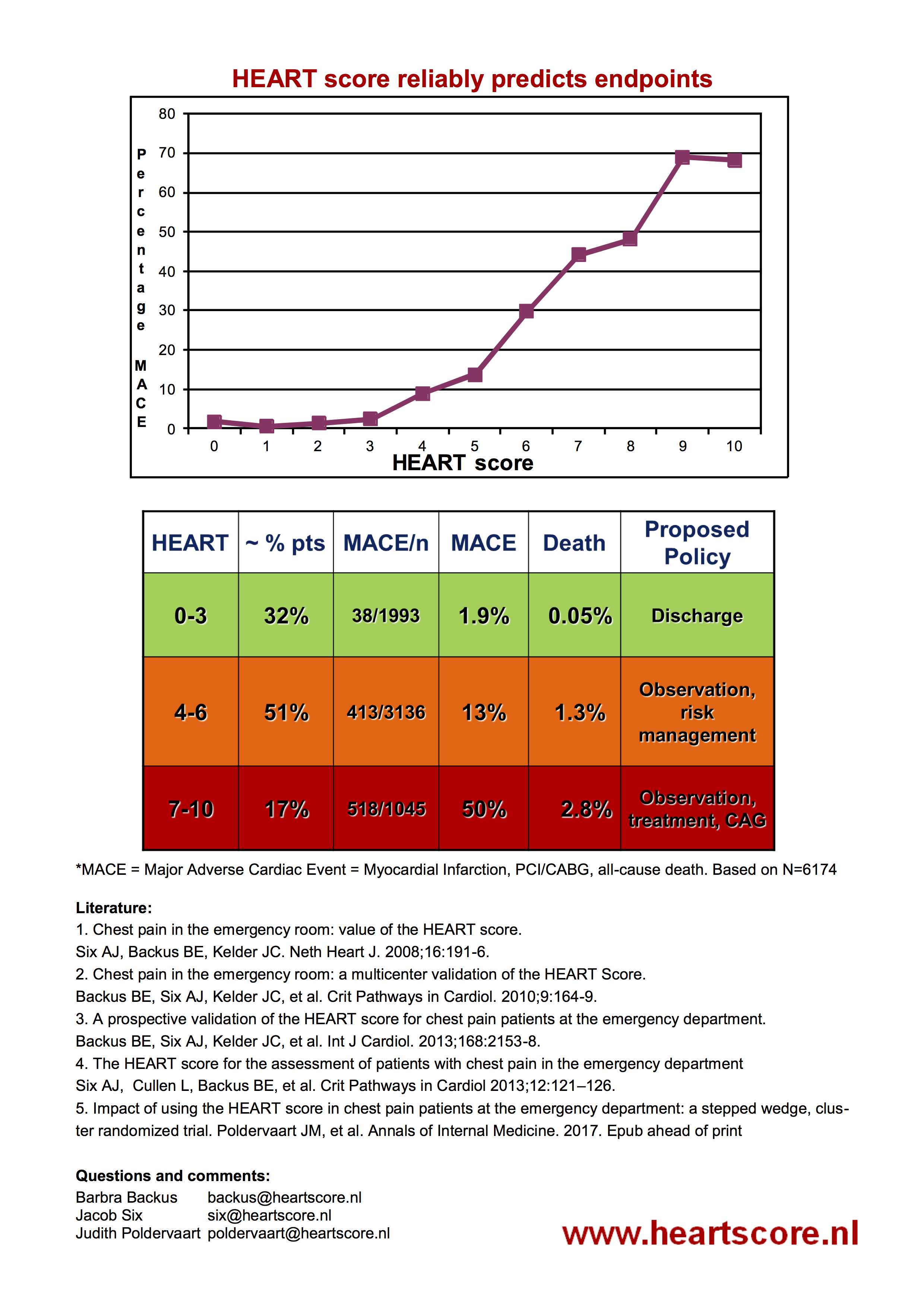
Use the online calculator, or download the MDCalc app for smartphones.



Use the online calculator, or download the QxMD app for smartphones.

The HEART Score
By assigning zero, one, or two points — towards an atypical patient history, ECG anomalies, the patient's age, any risk factors present, and elevated Troponin — patients score on a scale of 0‒10.

Discriminative Power
This graph shows that the HEART score is a perfect predictor of MACE within six weeks after presentation at the emergency room. The X axis represents the increasing HEART score of a patient, while the Y axis indicates the increasing risk of a cardiac event. The S shaped curve represents a discrimination between low risk and high risk patients. Low HEART scores accompany a low likelihood of MACE; high HEART scores predict high incidence of MACE.
| Score | % pts | MACE/n | MACE | Death | Policy |
| 0-3 | 32% | 38/1993 | 1.9% | 0.05% | Discharge |
| 4-6 | 51% | 413/3136 | 13% | 1.3% | Observation Risk management |
| 7-10 | 17% | 518/1045 | 50% | 2.8% | Observation Treatment, CAG |
Proposed Policy
Patients can be divided into three distinct groups:
A score of 0-3 indicates a risk of 1.6% for reaching a MACE, and therefore supports a policy of early discharge.
A HEART score of 4-6 points, with a risk of MACE of 13%, immediate discharge is not an option. These patients should be admitted for clinical observation and subjected to non-invasive investigations such as repeated troponin or advanced ischemia detection.
A HEART score ≥ 7 points, with a risk of 50% for a MACE, calls for early aggressive treatments possibly including invasive strategies without preceding non-invasive testing.
Copyright © 2019, HEART Study.



